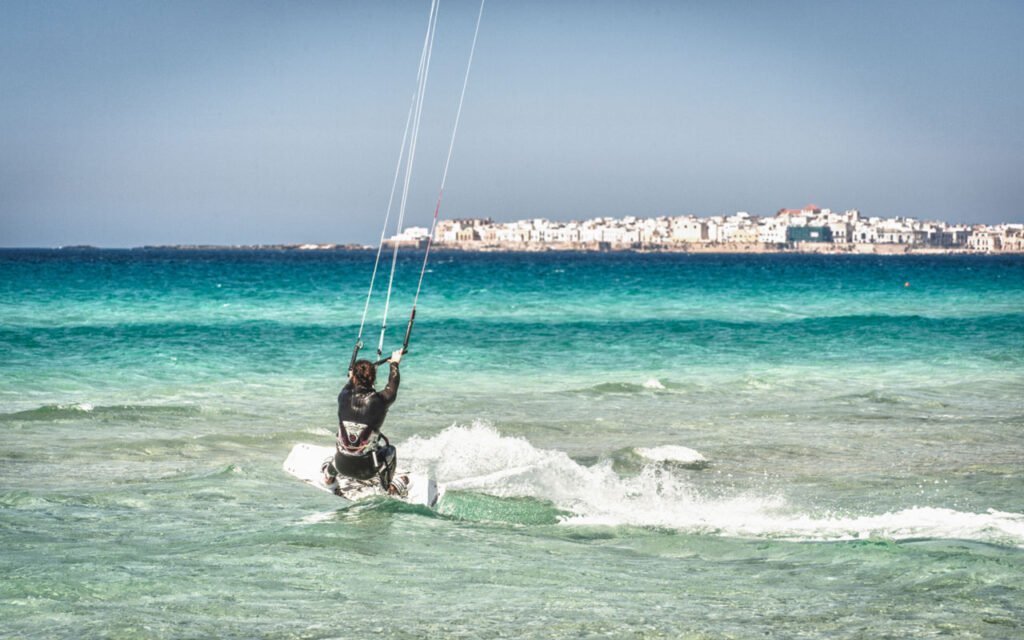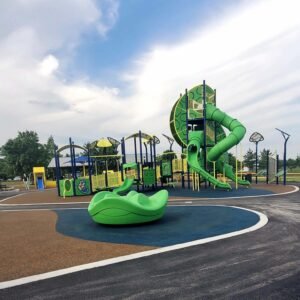
sycylia wakacje
introduction to sycylia wakacje
Kite surfing, also known as kiteboarding, is an exhilarating water sport that combines aspects of surfing, wakeboarding, and paragliding. With a kite and a board, you harness the wind’s power to glide across the water, perform aerial tricks, and experience an unmatched sense of freedom and adventure. For many, kite surfing offers not just a sport, but a lifestyle—a way to connect with nature and feel the rush of adrenaline in an open ocean setting. If you’ve ever dreamed of a sport that allows you to ride waves while flying above them, kite surfing could be the perfect fit. sycylia wakacje
In recent years, kite surfing has gained immense popularity. Its mix of skill, athleticism, and thrill makes it appealing to adventure seekers worldwide. Moreover, it’s accessible to people of all skill levels; from absolute beginners to expert riders, there’s something for everyone. Whether you’re a thrill-seeker chasing big jumps and tricks, or just looking to enjoy a new hobby, kite surfing has a lot to offer. sycylia wakacje
While the sport might seem daunting at first, it’s surprisingly accessible once you understand the basics. With the right equipment, a bit of training, and the right conditions, kite surfing can be a safe and incredibly rewarding experience. Let’s dive deeper into the fundamentals, so you can get ready to hit the water.sycylia wakacje
The Essential Kite Surfing Gear: What You Need to Get Started

Getting the right gear is one of the most important steps in kite surfing. Each piece of equipment serves a specific purpose, ensuring your safety, comfort, and ability to control the kite. Here’s a breakdown of the essential gear you’ll need. sycylia wakacje
1. The Kite: Your Power Source on the Water
The kite is the heart of kite surfing. Designed to capture wind and generate lift, kites come in various sizes and shapes, each suited to different conditions and rider preferences. There are two main types of kites: inflatable kites and foil kites. Inflatable kites are the most popular for beginners due to their stability and ease of use. They come with a leading edge that can be inflated, which helps the kite float if it lands on the water. sycylia wakacje
Foil kites, on the other hand, are lighter and do not have an inflatable edge. These kites are often used in light wind conditions or by experienced riders who prefer a more responsive kite. When choosing a kite, consider factors like wind conditions in your area, your skill level, and your weight. A larger kite generates more power, which is great for lighter winds, while smaller kites are ideal for stronger wind conditions. sycylia wakacje
2. The Kite Board: Your Ride on the Waves
Your kite board is where the surfing element comes into play. These boards resemble wakeboards or small surfboards, designed to glide smoothly over water. They come in various shapes and sizes, each offering different handling characteristics. Beginners typically start with a twin-tip board, which is symmetrical and allows riders to move in either direction without turning the board. sycylia wakacje
As you gain experience, you may want to experiment with directional boards, often called surf-style boards. These are great for riding waves, as they allow for carving turns and mimic the feel of traditional surfing. The right board will depend on your experience, local conditions, and preferred riding style, so be prepared to try a few before finding your perfect match. sycylia wakacje
3. The Harness: Keeping You Secure and Comfortable sycylia wakacje
The harness is what connects you to the kite, allowing you to control it while keeping your hands free to steer the board. There are two main types of harnesses: waist harnesses and seat harnesses. Waist harnesses are popular for their mobility and are often favored by experienced riders looking to perform tricks. Seat harnesses offer more lower back support and are commonly used by beginners or those looking for a more relaxed riding style. sycylia wakacje
Choosing a harness is all about finding the right fit. A good harness should feel snug without restricting your movement. The type of harness you choose will depend on your body type, comfort, and riding style, so don’t be afraid to try on several options to find the perfect one. sycylia wakacje
Learning the Basics of Kite Control: Building a Strong Foundation
Before you hit the waves, learning to control the kite is the most important skill in kite surfing. Kite control can make the difference between a smooth, enjoyable ride and a day full of mishaps. Kite control involves understanding the wind window, practicing safety maneuvers, and gradually building your comfort level with flying the kite. sycylia wakacje
1. Understanding the Wind Window
The wind window is an imaginary zone in the sky where you can fly your kite effectively. Picture the wind window as a semicircle in front of you, with you standing at its center. The area directly in front of you is known as the “power zone,” where the kite generates maximum pull. Beginners should avoid this area until they’re comfortable with basic kite handling. sycylia wakacje
To control the kite effectively, you need to keep it in the “neutral zone,” which is above your head and slightly to the sides. This area allows you to practice controlling the kite with minimal pull. As you grow more comfortable, you can begin experimenting with the kite in the power zone, where you’ll start to feel the true thrill of kite surfing sycylia wakacje.
2. Practicing Kite Safety Maneuvers
Safety should always come first in kite surfing. Before venturing onto the water, practice safety maneuvers on land, such as launching and landing the kite, releasing the safety system, and self-rescue techniques. Knowing how to activate the safety release on your kite is essential in emergencies, as it allows you to quickly depower the kite.
Self-rescue is another vital skill to practice. In case you lose control or encounter an issue on the water, being able to retrieve your kite and paddle back to shore is crucial. Most schools teach these techniques as part of beginner lessons, but it’s always a good idea to practice them until they become second nature. sycylia wakacje
3. Building Comfort with Flying the Kite
Once you understand the wind window and have practiced safety maneuvers, it’s time to build your confidence with kite flying. Start by practicing on the beach with a small trainer kite. A trainer kite allows you to get a feel for the wind without generating much power, making it ideal for learning the basics of control.
As you gain confidence, try practicing with a larger kite. This will give you a better idea of how the kite reacts to different wind strengths and how much power you can expect. Remember, mastering kite control takes time, so be patient and enjoy the learning process.
Riding Techniques: From Basic Stances to Advanced Tricks
Once you’re comfortable controlling the kite, it’s time to take your skills onto the water. Kite surfing has a variety of riding techniques, from simple stances to advanced maneuvers and tricks. Let’s break down some of the core techniques every kite surfer should know.
1. The Water Start: Getting Up and Moving
The water start is the first step in riding. It involves using the kite to pull yourself up from the water and onto your board. To perform a water start, position your board in front of you and keep your kite at a 45-degree angle. As you pull the kite across the wind window, it will generate enough power to lift you onto the board.
It might take a few tries to master the water start, so don’t get discouraged if you fall a couple of times. Keep practicing until you can smoothly transition from sitting in the water to riding on the board. Once you’re able to consistently perform a water start, you’re well on your way to becoming a kite surfer.
2. Upwind and Downwind Riding
Riding upwind and downwind are fundamental skills in kite surfing. Riding upwind allows you to move against the wind, which is essential for maintaining control and returning to your starting point. To ride upwind, angle your board slightly against the direction of the wind, and keep your weight on the back foot. This technique takes practice but is crucial for long sessions on the water.
Downwind riding, on the other hand, is easier and often favored by beginners. To ride downwind, position your board in line with the wind and let the kite pull you forward. This technique allows for faster speeds and is perfect for enjoying the thrill of kite surfing without focusing too much on control. sycylia wakacje
3. Jumping and Tricks
Once you’ve mastered the basics, you may want to try some jumps and tricks. Jumping in kite surfing involves using the kite’s lift to propel yourself into the air. To perform a jump, move the kite quickly in the power zone and pull up on the board. As you gain confidence, you can begin experimenting with different tricks, such as spins, grabs, and even flips.
Remember, practicing jumps and tricks requires skill and patience. Start small and build your way up as you gain confidence and control. Each successful jump will boost your confidence, and before you know it, you’ll be performing impressive tricks on the water.
Choosing the Right Locations: Best Kite Surfing Spots Around the World
Kite surfing is a location-dependent sport; ideal conditions are essential for a safe and enjoyable experience. Some places are renowned for their consistent winds, warm water, and scenic landscapes, making them kite surfing paradises. Here are some of the best spots around the world for kite surfing. sycylia wakacje
1. Tarifa, Spain: The Kite Surfing Capital of Europe
Located on Spain’s southern coast, Tarifa is known as one of the top kite surfing destinations in Europe. With consistent winds, beautiful beaches, and a lively atmosphere, Tarifa attracts kite surfers from all over the world. The wind conditions here vary from mild to strong, making it suitable for both beginners and advanced riders.






